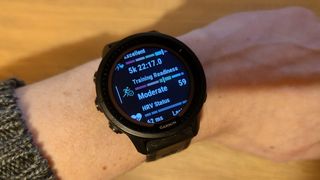Google Pixel Watch 3 has landed. Google has used its Made by Google event (on August 13, 10am PT / 1pm ET / 6pm BST) to unveil the latest iteration of its best smartwatch. While you can read our hands-on review to check out our first impressions of the watch (and check out our run-down of the whole Made By Google event live here) one aspect of the device we’ve not yet had a chance to test is the set of new fitness tools.
As well as smart features and the new emergency Loss of Pulse Detection tool, which alerts emergency services if you’re having a cardiac event, there’s a big new suite of fitness functions from Fitbit. The Pixel Watch 3 now uses machine learning to analyze advanced running metrics, so runners can benefit from knowing their stride length, ground contact time, and vertical oscillation (which means ‘how much you bounce up and down during a run’ in runner-speak).
The Pixel Watch 3 also offers a new Target Load feature and more advanced workout plans, allowing you to schedule in multi-stage workouts incorporating warm-ups, intervals and target paces. The watch will alert you if you’re falling behind your target pace during your run.
While it collects information about your workout, it also gathers recovery information, serving you up your Daily Readiness Score and other health metrics in a new Fitbit Morning Brief, a daily digest of your health sent directly to your watch.
Familiar (watch) faces

If all this sounds great, that’s because it is. As a keen runner, I’m certainly looking forward to testing these advanced running metrics. However, I’ve also already been using them for years… because they’re already on other watches.
None of this is anything new. The best running watches and best Garmin watches have been estimating stride length, oscillation and ground contact time for a very long time, and even Apple advertised that advanced training tools for runners just like these were arriving to its new suite of watches – two years ago, during its watchOS 9 debut.
Likewise, the Morning Brief sounds almost exactly like Garmin’s Morning Report, a feature I also loved when it was introduced, and I welcome it here. Garmin has also long allowed its users to design custom multi-segment running programmes, or use its premade ones, with warm-ups, virtual pacers and intervals. Garmin has actually moved on and is now using algorithms to adjust its running plans based on your recovery statistics.
I’m glad Google has caught up with the pack. Its Fitbit devices have long been lagging behind, and Google seems intent on making the Google Pixel Watch 3 the best Fitbit ever created, even if it’s not a device that’s properly under the Fitbit name. However, the implication that these features as groundbreaking or innovative is silly, as competitive smartwatch brands have been doing this for ages.
Google Pixel Watch wearers who happen to be runners – and I’m betting there are quite a few – will definitely benefit from these powerful running tools. The bit I’m interested in is the mention of “machine learning” used to calculate statistics: as soon as I get the opportunity, I’ll be running with a Google Pixel Watch 3 on one wrist and an Apple Watch Ultra 2 or Garmin Epix Pro on the other, to see if the two watches spit out similar results.
Check out our Google Pixel Watch 3 TikTok coverage here:
@techradar
♬ original sound – TechRadar
You might also like
Services Marketplace – Listings, Bookings & Reviews